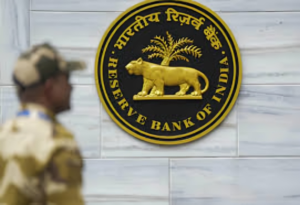RBI mandates 10% loan retention in final co-lending norms for banks, NBFCs
Introduction
The Reserve Bank of India (RBI) recently announced its final co-lending guidelines, marking a major shift in how banks and non-bank financial companies (NBFCs) share credit risk. Under these norms, every regulated entity (RE) must keep at least 10% of each loan on its own books. The rules will take effect from January 1, 2026. This change aims to bolster risk sharing, transparency, and borrower protection in co-lending deals.

Key Highlights of the New Norms
- Minimum Retention Requirement
Each co-lender (bank or NBFC) must retain a minimum 10% share of every individual loan on its balance sheet. - Transfer Timeline
The loan-originating entity must transfer loans to its co-lending partner within 15 days of disbursement. - Default Loss Guarantee (DLG)
The originator may offer a DLG of up to 5% of the outstanding loan portfolio under the agreement. - Unified Asset Classification
If one lender classifies a loan as stressed (SMA/NPA), the co-lender must apply the same classification to its share. - Detailed Agreement Requirements
Co-lending contracts must outline borrower selection criteria, product lines, fees, roles and responsibilities, information-exchange timelines, and grievance-redressal mechanisms.
Why RBI Introduced These Changes
- Enhanced Risk Sharing
By mandating retention, RBI ensures both parties have skin in the game, reducing moral hazard. - Greater Transparency
Clear disclosures on roles and risks help borrowers understand who does what. - Streamlined Priority Sector Lending
Extends beyond priority sector, allowing all commercial banks (except small finance banks, RRBs, and local area banks), All-India Financial Institutions, and NBFCs to enter co-lending deals. - Improved Borrower Protection
Standardised asset classification and grievance redressal bolster customer confidence.
Detailed Provisions
- Internal Credit Policies
REs must update their credit policy to include:- Limits on co-lending portfolio share
- Target borrower segments
- Due diligence of partner entities
- Grievance redressal framework
- Escrow Mechanism
All cash flows to be routed through an escrow account to ensure timely collections and transparent distribution. - Disclosure Norms
Upfront disclosures to borrowers about each party’s share, interest rates, charges, and recovery processes.

Real-Life Implications
Many banks and NBFCs have grown co-lending portfolios rapidly since 2020. While this framework opened up new lending capacities—especially for priority sector—it also carried risks of uneven skill and risk appetite between partners. Now, with retention norms:
- Banks will shoulder more risk, prompting stricter appraisal standards.
- NBFCs will gain more responsibility beyond origination, such as monitoring and collections.
- Borrowers stand to benefit from transparent terms and faster grievance resolution.
For example, a mid-sized NBFC that once held only 20% of a ₹50 lakh home loan on its books will now retain at least ₹5 lakh. This change pushes it to strengthen underwriting and post-disbursement tracking.
Benefits and Challenges
Benefits
- Aligns incentives for responsible lending
- Boosts credit quality and reduces defaults
- Enhances customer trust through clear disclosures
Challenges
- Higher capital requirements for NBFCs and some banks
- Need to revamp IT systems for escrow and reporting
- Potential slowdown in co-lending deals during the transition
Conclusion
The RBI’s final co-lending norms, effective January 1, 2026, usher in a new era of shared responsibility between banks and NBFCs. By mandating a 10% retention, capping DLG, and standardising processes, the central bank aims to foster a more robust, transparent, and borrower-centric lending ecosystem. Financial institutions must act now to update policies, systems, and partnership agreements to comply with these guidelines, ensuring a smooth transition and continued credit flow to end-users.